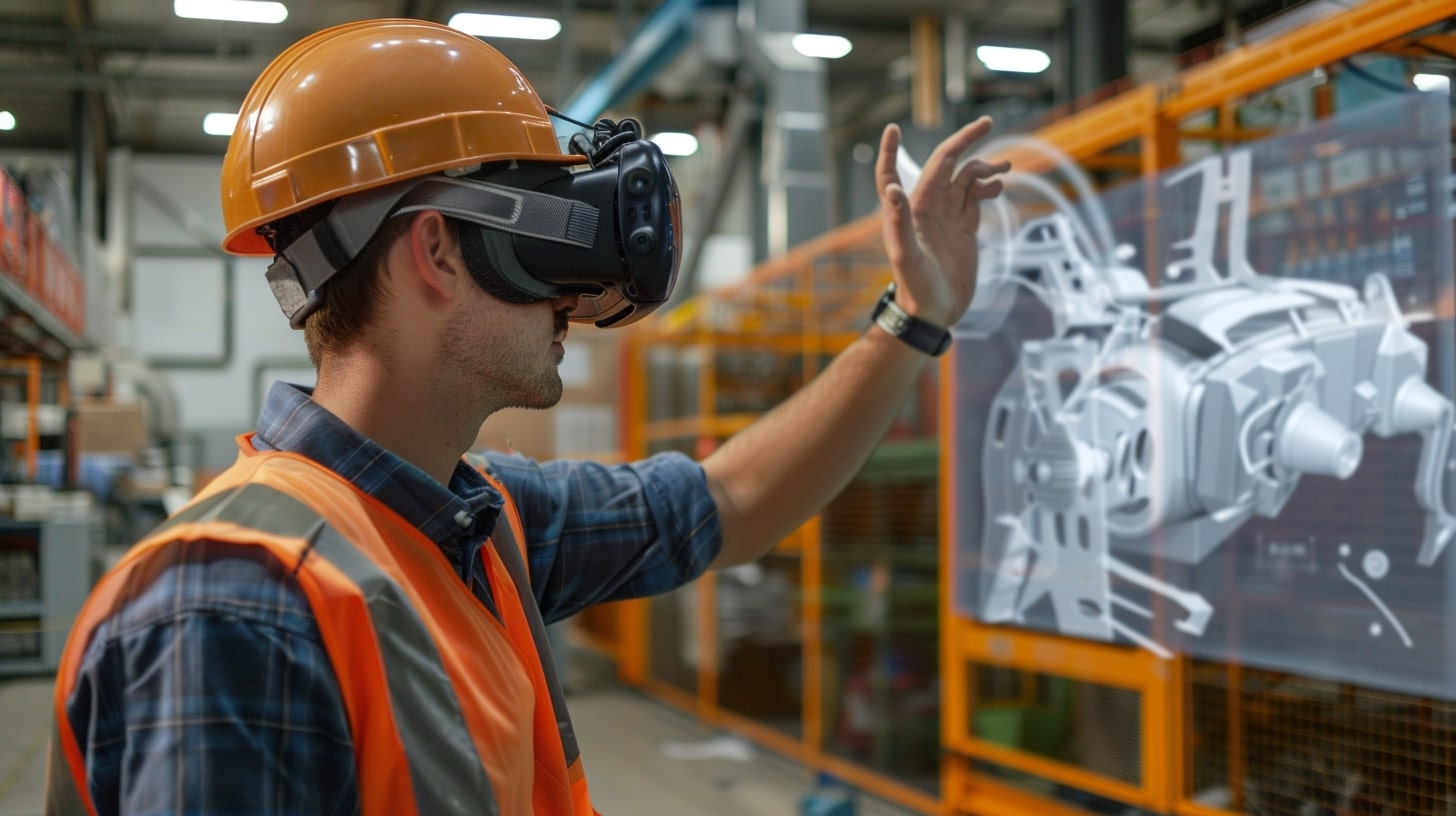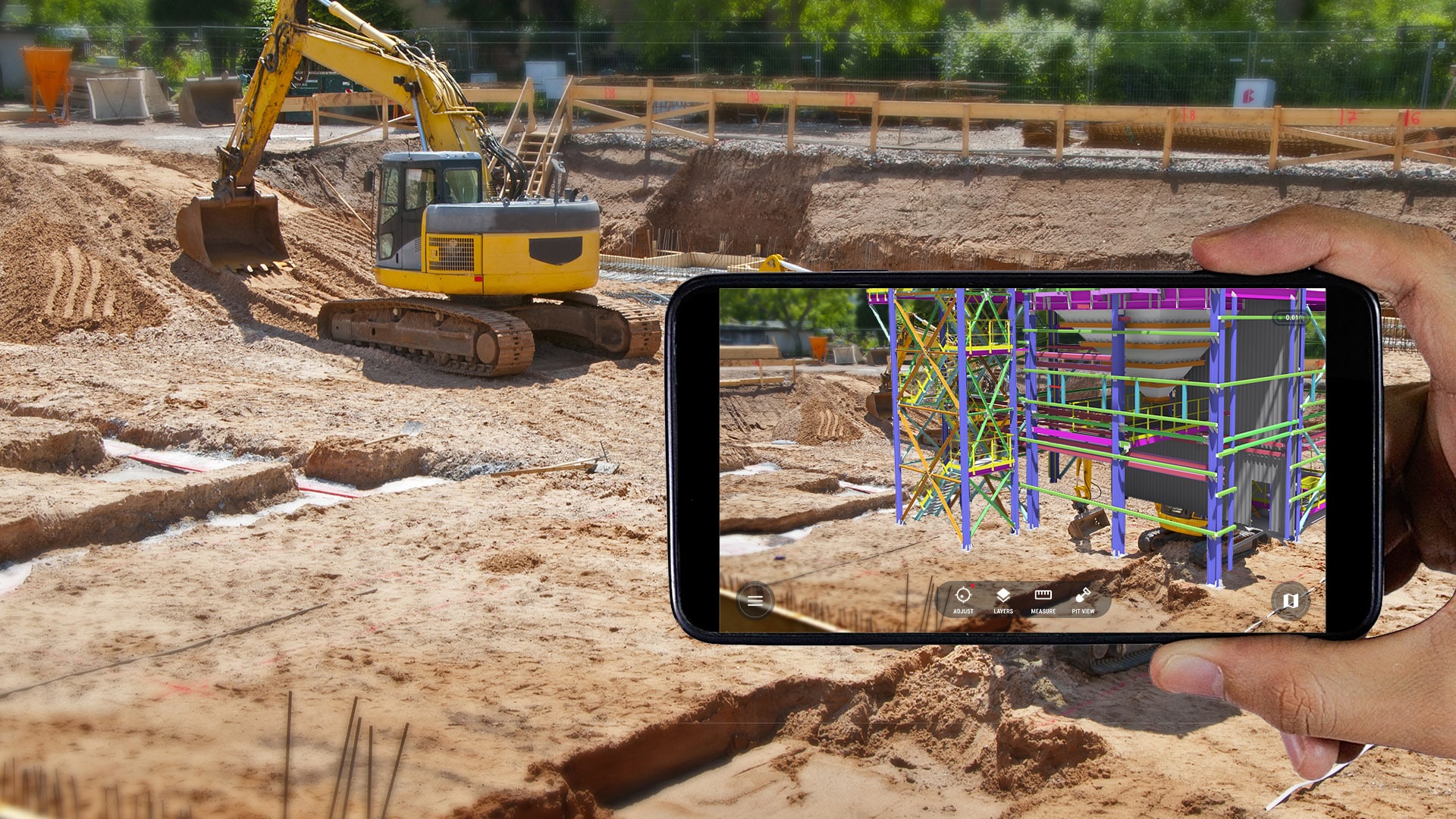10 Augmented Reality Solutions in Construction
In today’s rapidly evolving construction industry, Augmented Reality (AR) is no longer just a futuristic concept—it’s a vital tool that’s reshaping how buildings are conceived, constructed, and maintained. By integrating digital information into the physical world, AR provides a unique visualization that enhances precision, improves safety, and fosters better collaboration. Here’s a look at how AR is transforming traditional construction processes.

1. Pioneering Project Visualization
Imagine being able to walk through your project on the actual site before even breaking ground.
TwinBIM AR makes this possible by allowing architects and clients to interact with 3D models superimposed onto the physical environment.
This not only helps in making more informed decisions but also enhances client satisfaction through a tangible vision of the final product.
For instance, during a recent visit to a new residential complex under development, the project manager used AR to demonstrate potential changes in real-time, which significantly streamlined the decision-making process.

2. Blueprint Precision and Real-time Updates
Gone are the days of cumbersome paper blueprints. With AR, digital plans are overlaid directly onto the construction site, allowing for meticulous precision.
This technology ensures that every pipe and pillar matches the original specifications with exactness.
A civil engineer I spoke with highlighted how AR helped them identify a critical misalignment early in the construction phase, which could have led to severe structural issues later on.

3. Transformative Safety Training
Safety training with AR introduces an interactive dimension that traditional methods lack. By simulating real-world dangers in a controlled environment, workers can experience hazardous scenarios without the risks.
A safety trainer shared with me how AR headsets are used to simulate emergency situations, from fires to structural collapses, preparing teams more effectively than conventional drills.

4. Remote Assistance and Expert Collaboration
AR enables real-time collaboration across different geographies.
This feature came to the rescue during a complex bridge project where the lead engineer, based in a different country, provided live instructions and feedback via AR glasses.
This not only saved travel time and costs but also ensured that expert guidance was just a glance away.

5. Reducing Errors and Rework
One of the most significant advantages of AR in construction is its ability to reduce errors. By providing a layer of digital information over the physical world, workers can see discrepancies between planned designs and actual construction immediately.
This capability was particularly useful in a recent urban development project where real-time AR insights helped the team avoid costly and time-consuming rework.

6. Enhanced Measurement Capabilities
Accuracy is critical in construction, and AR brings unparalleled precision to it.
By using AR tools, measurements can be taken quickly and displayed in real time, reducing errors and the need for rework.
“Using AR for measurements has reduced our project’s time to completion by about 10%,” a site manager explained, showing me how his team uses AR glasses to instantly measure distances between structural elements.
This not only speeds up the process but also ensures that measurements are exact, supporting flawless execution.

7. Interactive Marketing and Client Engagement
AR also revolutionizes how construction projects are marketed and sold.
Real estate developers are increasingly turning to AR to provide potential buyers with virtual tours of properties before they are constructed. This immersive experience allows clients to visualize their investment and make informed decisions.
“It’s one thing to see a flat floor plan, but stepping inside your future home through AR? That changes everything,” mentioned a real estate marketer during a demonstration of their AR app, which lets users explore various design options and finishes in real-time.

8. Streamlining Collaborative Efforts
Collaboration in construction can be complex, involving multiple stakeholders from architects to contractors.
AR facilitates a seamless collaboration environment where changes can be viewed and approved by different parties in real-time.
During a recent high-rise project, AR was used to host virtual meetings where stakeholders could adjust and approve structural changes on the fly, which significantly cut down on delays and improved project turnaround times.

9. Sustainable Construction Practices
Sustainability is a crucial aspect of modern construction, and AR helps by optimizing material usage and reducing waste.
For instance, AR can simulate different construction scenarios, allowing project managers to choose the most resource-efficient methods.
A sustainability officer shared how AR simulations helped their company reduce material waste by 15% on a large project, illustrating the technology’s role in promoting environmentally friendly practices.

10. Future-Proofing Construction
As we look to the future, AR is poised to integrate even more deeply with other technologies like AI and IoT, creating smarter, more responsive construction environments.
The potential for AR to interface with IoT devices to monitor construction sites and manage resources in real time is particularly exciting.
“Imagine AR that not only shows you how to install an HVAC system but also tells you its efficiency in real time,” pondered an innovative tech developer during a tech conference on the future of construction.

Let’s Talk
Send us a message and we’ll get back to you within 5 hours
AR in construction involves overlaying digital information, such as 3D models or schematics, onto the physical world using devices like smartphones, tablets, or AR glasses. It helps enhance visualization, planning, and execution of construction projects.
Lorem ipsum dolor sit amet, consectetur adipiscing elit. Ut elit tellus, luctus nec ullamcorper mattis, pulvinar dapibus leo.

